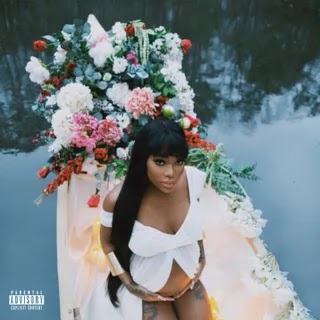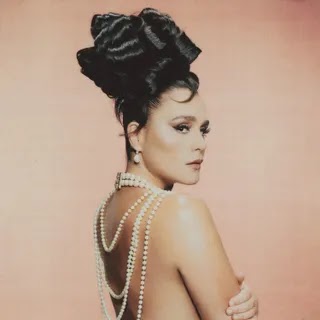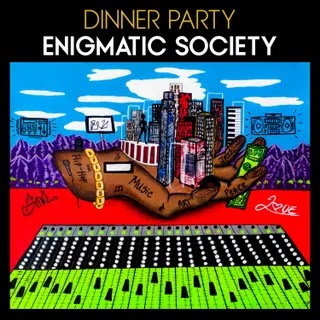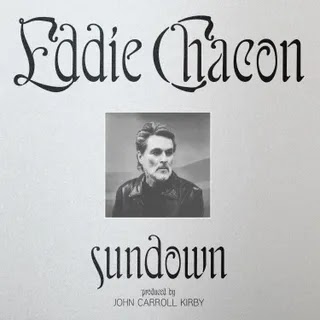Today on Pitchfork, we are taking a critical look at the UK band Sade—from quiet storm mainstays to defining a generational vibe—with new reviews of four of their records.
High gloss, high glam, and high production-value defined the majority of pop music coming out of the UK in the mid-’80s. Synth and technopop traveled across the pond to take over U.S. airwaves and MTV programming blocks, while Michael Jackson, Prince, Lionel Richie, and Tina Turner were redefining the idea of Black pop-stardom.
Through the excess, the London band Sade swerved outside the lane with their anti-pop debut, 1984’s Diamond Life. The cosmopolitan collection of sounds and tales from a life far sexier and more interesting than the listener’s changed music across genres, both ushering in sophisti-pop and pushing urban radio’s quiet storm format to a peak rivaling adult contemporary.
Promise, from 1985, is the ideal second album, firmly establishing the Sade template without retreading the same material of the band’s debut. The album feels like a volume in a series, as does each subsequent addition to Sade’s catalog. I was nine years old when the album dropped, and my parents, part of the young Black middle-class sophisticate set that helped break Sade stateside, kept Promise and Diamond Life in rotation together as though the two were one long extended play. I’ve grown into the music—over the years, Sade has soundtracked my falling in love, recovering from love, and remembering lost love. When my friends became fans with 1992’s Love Deluxe, I was already a deep devotee. To date, Promise is the album that most resonates with me top to bottom.
Promise is lush and unhurried, reclining somewhere between jazz, Brazilian pop, and soul. Multiple articles and reviews from the time of release leaned on the same descriptor for the singer, the band, and the music: “cool.” It’s mood music, at the purest definition: Stuart Matthewman’s sax, Andrew Hale’s keys, and Paul Spencer Denman’s masterful bass envelope listeners, transport them. The live recordings were a departure from the heavily programmed production of the era, and the sparse elegance that some found—and still find—too loungy is one of the primary factors in Sade’s sound and catalog aging beautifully.
The lead single, “The Sweetest Taboo,” was a quick hit. It was likely chosen to kick off the project because it’s the most radio-friendly offering—it could have been tailor-made just for the late-night “quiet storm” radio format. The sexy midtempo was infectious to me even when I was 9 years old doodling the lyrics in English class—lyrics I didn’t completely understand in context—after hearing the song on repeat around the house and in my parents’ car. The percussion loop, Adu’s breathy vocals, the horn showcase in the bridge; “The Sweetest Taboo” is an accessible and efficient sample of all the best elements of Sade. But Promise’s opener, “Is It a Crime,” is Sweetback’s (the name Matthewman, Hale, and Denman perform under as a trio) showcase. This, for me, is the definitive Sade song; for six minutes and 21 seconds, we’re on a ride with Hammond organs and djembes with Adu pleading over big band-style crescendos. She describes her love as one that “dives and jumps and ripples like the deepest ocean,” and that’s what the song does, waves of sax and piano cresting and breaking over Adu’s insistent declaration of love.
“Is It a Crime” is reason enough in itself to laud Promise as a masterwork, but the LP boasts a tighter and more confident Sade unit than Diamond Life, with more intentional story-telling and longer compositions. It’s a choose-your-own-adventure of sorts: You can wrap yourself up in the music and Adu’s soft-touch tone, recall or lament life and love through the lyrics, or fully immerse yourself with both. Lyrically, Promise is a collection of short stories exploring the varied stages of love and relationships; some autobiographical to Adu, who co-wrote every song on the album but one.
While Promise—and Sade’s music in general—is often categorized as sexy or relaxing, the smooth ease of Adu’s vocals over the mellow instrumentation belies the melancholy in most of the album cuts. “War of the Hearts” frames the end of a relationship as a standoff; two people exhausted from hurting each other, but too stubborn to call the cease-fire that would end it. There’s “Jezebel,” the deceptively simple story of a sex worker, told in innuendos, “Jezebel, what a belle/Looks like a princess in her new dress/How did you get that?/Do you really want to know? she said.” Even though the lyrics are about Jezebel’s projected determination and control, the track is an example of Adu’s almost halting vocals conveying the emotion and backstory typically attributed to bigger voices.
“Tar Baby,” one of the final tracks on the album and seemingly inspired by her own biracial background, feels under-examined now. Adu has apparently never talked about this song—it’s title heavy with suggestion, not yet considered a slur, but still problematic enough to be intentional during its release in 1985. It starts tentatively—the story of a shameful, unexpected pregnancy. But then it turns in tempo and lyric to a celebration of the undeniable love and joy of a child. The album ends with a sad smile, “Maureen,” an uptempo tribute to a friend Adu lost a few years before recording. Sade remains cheerful even in its refrain: “Never gonna see you again/And you’ll never meet my new friends.”
Promise was the chaser to Diamond Life’s shot; one that positioned Sade for the elusive legend status she and the band have achieved today. They didn’t record Diamond Life with U.S. stardom in mind; that was a trial run. Promise was the commitment—a declaration of voice, sound, and style that was then unlike anything else in the mainstream sphere. Rather than a departure or different direction from the first album, Promise simply executes on a higher level, and the repeated success provided the leverage for the group to continue to follow their own formula, in their own time.
The quiet storm era encompassed everything from straight down the middle R&B (Luther Vandross), to classic soul, to jazzy soul (Anita Baker), to British imports (along with Sade, soul band Simply Red and synth-pop group Art of Noise were popular with the after-dark format). It wouldn’t have been unusual for “The Sweetest Taboo” to follow gospel-bred singer Shirley Murdock’s powerfully delivered “As We Lay,” or precede newcomer Whitney Houston’s glossy and gorgeous “Saving All My Love for You.” But I never needed Sade, the singer, to give me more vocally; I didn’t need the lyrics to go deeper. “It’s all simple and unpretentious, and that’s what music is to me,” Adu shared with Rolling Stone in a rare interview in 1985. “It should take you somewhere and move you in some way, and that’s what I want our songs to do.”
















0 comments:
Post a Comment